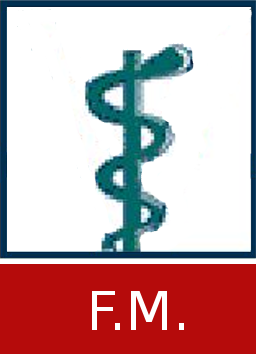FREINS À LA POURSUITE D’ACTIVITÉ SPORTIVE DES PERSONNES HANDICAPÉES SUITE À UNE ATTEINTE MÉDULLAIRE, ET AYANT BÉNÉFICIÉ DE SPORT DURANT LEUR HOSPITALISATION : CAS DU CENTRE DE RÉADAPTATION NEUROLOGIQUE ET LOCOMOTRICE DU CHU DE LIÈGE
Mahiane Bidja, Anne 
Promotor(s) :
BARTSCH, Valérie 
Date of defense : 18-Jun-2019 • Permalink : http://hdl.handle.net/2268.2/6360
Details
| Title : | FREINS À LA POURSUITE D’ACTIVITÉ SPORTIVE DES PERSONNES HANDICAPÉES SUITE À UNE ATTEINTE MÉDULLAIRE, ET AYANT BÉNÉFICIÉ DE SPORT DURANT LEUR HOSPITALISATION : CAS DU CENTRE DE RÉADAPTATION NEUROLOGIQUE ET LOCOMOTRICE DU CHU DE LIÈGE |
| Author : | Mahiane Bidja, Anne 
|
| Date of defense : | 18-Jun-2019 |
| Advisor(s) : | BARTSCH, Valérie 
|
| Committee's member(s) : | KAUX, Jean-François 
FORTHOMME, Bénédicte 
Maertens de Noordhout, Benoît 
|
| Language : | French |
| Keywords : | [fr] Lésion de la moëlle épinière [fr] paraplégie [fr] tétraplégie [fr] revalidation [fr] sport |
| Discipline(s) : | Human health sciences > Public health, health care sciences & services |
| Institution(s) : | Université de Liège, Liège, Belgique |
| Degree: | Master en sciences de la santé publique, à finalité spécialisée en épidémiologie et économie de la santé |
| Faculty: | Master thesis of the Faculté de Médecine |
Abstract
[fr] Introduction : Selon l’Organisation Mondiale de la Santé (OMS), environ 3,2 millions de décès au niveau mondial chaque année sont attribuables au manque d’exercice. Une revue de la littérature montre l'importance de l'activité sportive pour la santé. Celle-ci prend une dimension supplémentaire chez les personnes atteintes de lésion de la moelle épinière (LME). Selon la littérature le sport fait partie du traitement lors de la rééducation afin de familiariser les personnes handicapées physiques avec le sport, améliorer leur forme physique et leur qualité de vie, les encourager à mener une vie physiquement active après leur sortie de l'hôpital.
Objectif : Il s’agissait de déterminer les freins de la poursuite d’activité sportive en post revalidation chez les personnes handicapées suite à une atteinte médullaire, ayant bénéficié de sport durant leur hospitalisation au centre de revalidation neurolocomotrice du CHUOA.
Matériels et méthode : 34 participants ont complété un questionnaire auto-administré. Il s’agissait des personnes âgées d’au moins 18 ans, avec une bonne connaissance du français, ayant séjourné au CHUOA dans le cadre d’une première hospitalisation en revalidation dans un contexte de handicap moteur lié à une LME, ayant bénéficié de sport durant leur hospitalisation. Les analyses statistiques se sont faites via le logiciel de traitement statistique R version 3.4.2. L’analyse multivariée par régression logistique binaire a déterminé l’impact des différentes variables significatives en analyses univariées (p-valeur < 0.05) sur la probabilité de ne pas faire du sport en post revalidation.
Résultats : Le niveau d’atteinte médullaire et le fait pour les personnes handicapées moteur de penser que le sport est essentiel ou important étaient significativement associés à la probabilité de ne pas faire du sport en post revalidation (p-valeur< 0.05). Cette probabilité était augmentée de 14.6 fois et 25.3 fois respectivement (p-valeur < 0.05), lorsque le sujet avait une atteinte au niveau de la moelle cervicale et lorsque pour lui faire du sport pour une personne à mobilité réduite (PMR) n’était pas essentiel.
Conclusion : Le niveau d’atteinte médullaire et l’importance que revêt l’activité sportive pour les personnes en situation de handicap apparaissent comme des éléments essentiels dans la poursuite ou non de l’activité sportive en post revalidation.
Mots clés : lésion de la moelle épinière ; paraplégie ; tétraplégie ; revalidation ; sport.
Abstract
Introduction : According to the World Health Organization (WHO), about 3.2 million deaths worldwide each year are attributable to lack of exercise. A review of the literature shows the importance of sports activity for health. This takes an extra dimension in people with spinal cord injury (SCI). according to the literature, sport is part of the treatment during rehabilitation in order to familiarize people with physical disabilities with sport, improve their fitness and quality of life, encourage them to lead a physically active life after discharge from the hospital.
Aim: The aim was to determine the brakes of post-revalidation sports activity following disability in the spinal cord, having benefited from sports during their hospitalization at the CHUOA neurolocomotor revalidation center.
Materials and methods: 34 participants completed a self-administered questionnaire. These were people aged at least 18 years old, with a good knowledge of French, having stayed at the CHUOA as part of a first hospitalization in revalidation in a context of motor disability related to a SCI, who benefited from sport during their hospitalization. Statistical analyzes were performed using the R statistical package version 3.4.2. The impact of variables, statistically significant in uni-variate analyzes (p-value <0.05), on the probability of exercising in post-revalidation, were assessed using a multi variate binary logistic regression.
Results: The level of SCI and the fact that people with motor disabilities think that sport is essential or important were significantly associated with the probability of not participating in post-revalidation sport (p-value< 0.05). This probability was increased by 14.6 times and 25.3 times, respectively (p-value< 0.05), when the subject had an injury in the cervical cord and when to exercise for a person with reduced mobility (PRM) was not essential.
Conclusion: Both level of medullary involvement and the importance of sport activity for people with disabilities appear as essentials elements in the pursuit or not post-revalidation sport activity.
Key words: spinal cord injury; paraplegia; quadriplegia; revalidation; sport.
Cite this master thesis
The University of Liège does not guarantee the scientific quality of these students' works or the accuracy of all the information they contain.


 Master Thesis Online
Master Thesis Online



 Anne_Mahiane_B_Mémoire.pdf
Anne_Mahiane_B_Mémoire.pdf
